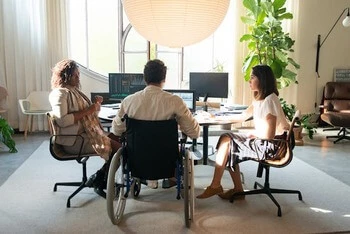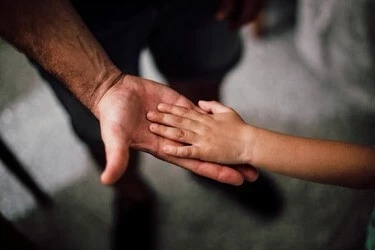Interview: Discover DEI in Asia-Pacific
Add bookmark
Diversity, equity, and inclusion (DEI) is a priority for organisations around the world. Each region has its own needs, focal points, and goals. Shruti Ganeriwala is the HR Director, Foods and Refreshments and Head of Diversity, Equity and Inclusion at Unilever Australia and New Zealand. She has more than 17 years of experience in Human Resources and has held positions in learning and development, talent management, and DEI.
WATCH: Diversity, Equity, and Inclusion: Create a Culture of Belonging
She says her passion lies with building a diverse and inclusive culture, where people feel they belong. Recently, Ganeriwala, who is a member of the HR Exchange Network Advisory Board APAC, talked with HREN about the nuances and strategies in DEI that are particular to Asia-Pacific and more specifically Australia and New Zealand, the region that she covers. Discover what she thinks:
HREN: What is the purpose and goal of diversity in Asia-Pacific? How is it different? Who are you trying to reach with those strategies for DEI?
SG: I think for us [in Australia and New Zealand], unlike the United States, race and ethnicity are important, but it's not actually our biggest priority. It's super important, but it's not our biggest focus area. Gender is, and I feel disappointed and disheartened that we still have to keep working on this after having worked on it for so many years. There are lots of nuances. For example, in Australia and New Zealand, we focus on domestic and family violence, because we see scary stats. One woman per week in Australia is being killed by an intimate partner, as a result of domestic violence. So, gender continues to be really important.
INTERVIEW: Make DEI Integral to Your Work Culture
Disability is actually a big area in the industry now and is a huge focus for us. One in five people has a disability, so it is 20% of our population [in Australia]. LGBTQ+ continues to be a big area of focus for us. Then, race is an area of focus. In our context, it is our First Nations Australians, Aboriginal and Torres Strait Islander peoples, which represent 3% of the Australian population. But there is so much work that has to be done in in terms of businesses and Aboriginal communities working well together.
Also, diversity and inclusion overlaps really well, in many contexts, with mental health. I was taken aback. In Unilever, we did a session a couple weeks ago [about mental health], and I did not know this, but nine people in Australia take their lives every day. Every single day, seven men and two women take their lives.
HREN: What is new in your DEI work?
SG: The other conversation we're starting to have now is around intersectionality. You know, how do these areas overlap for many? Think of a person with a disability, who is also female. Or the intersectionality and the nuances that exist for a gay person with a disability who's a female.
The other thing I'll say is capturing the data, knowing where the organization is going, is another thing that we are focused on. It is hard to do because of all the nuances around privacy questions. It has to be voluntary, so can we capture the data. How will we capture it?
WATCH: Incorporating a Culture of Diversity and Inclusion for Mental Health and Wellbeing
We've been jumping through many hurdles. But I think we've obviously put big ambitions out there by saying that we internally want to represent the society that we are a part of. So if 20% of Australians have a disability, at least 20% of our workforce should be made up of people with disabilities.
Sometimes we can measure it. Sometimes we cannot measure it. They say 70% to 80% of disabilities are non-apparent forms of disability. My point is that capturing that data is super critical, so our initiatives can be customized. But it's also super challenging.
HREN: What would you say is your best bit of advice for HR leaders?
SG: Stay the course. I am quite an impatient person. When we started working on disability a couple years ago, I wanted to see tangible change and make sure we had hired people with disabilities, etc. As I look back, I realize that it takes time. You have to first build the culture and the education and the conversation. Before you get to the tangible, some intangible things have to happen. People have to be educated about it, for example.
Also, I think this is a time we can all experiment with different things, whether it's flexibility, whether it's four days of work per week, etc. And I think there's lots of appetite, in the business and in the industry to try and fail fast. In fact, a four-day week in our New Zealand business is still a trial. Because we've said we'll do a trial, see the business results, see productivity measures, etc. After that, we'll make a decision whether it's a permanent work arrangement.
HREN: What’s your hope for the future?
SG: My dream is that we stop talking about diversity and inclusion as a separate thing on the side, and it just becomes the way we do business, the way the leaders have conversations, the way we devise our talent pools, when we are recruiting.
I sometimes feel we focus on either the culture and conversations or the processes and systems. My dream is that all organizations look at all of this holistically, and find that balance between the hardware because you're only as good as your policies. But then the policies are only as good as the leaders who bring them to life in the conversations that we have, the language we use in our organization, etc.
I hope that we create these industry networks of organizations, which openly share and help move the needle for everyone. I'm part of some diversity and inclusion external forums in Australia, where we openly share what we are doing, struggling with, etc. The reality is none of us know how to crack it. If we knew, we would have done it long ago, right? We’re all in this together.


























